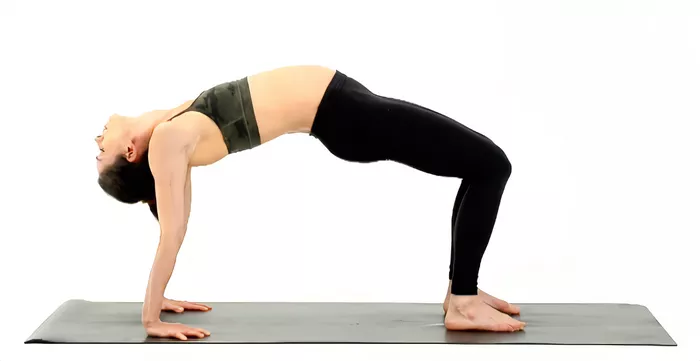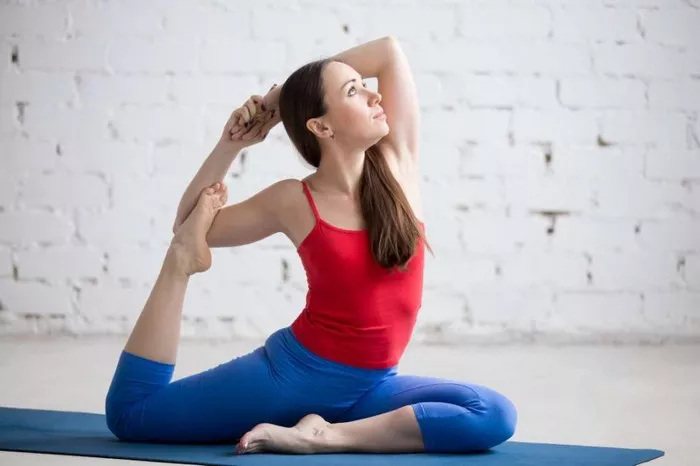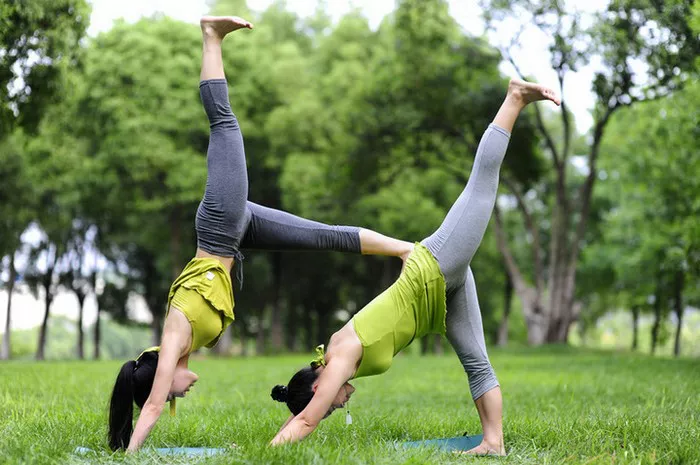The concept of chakras is integral to many yoga practices, serving as focal points of energy within the human body. Rooted in ancient Indian traditions, chakras are believed to influence both physical and spiritual health. This comprehensive guide will delve into the seven primary chakras, exploring their significance, characteristics, and the ways in which yoga can help balance and activate these energy centers.
Understanding Chakras
Chakras, a Sanskrit term meaning “wheels,” are depicted as spinning vortices of energy aligned along the spine. Each chakra corresponds to specific physical, emotional, and spiritual aspects of our being. When in balance, these energy centers contribute to overall well-being; when blocked or out of alignment, they can lead to various health issues.
The Seven Primary Chakras
1. Root Chakra (Muladhara)
- Location: Base of the spine
- Color: Red
- Element: Earth
- Mantra: Lam
The Root Chakra, or Muladhara, is the foundation of our energy system. It governs our sense of safety, security, and survival instincts. A balanced Root Chakra provides stability, grounding, and a strong connection to the physical world.
Imbalances: Fear, anxiety, and financial instability can arise from a blocked Root Chakra. Physical symptoms may include lower back pain, fatigue, and issues with the legs and feet.
Balancing Poses: Mountain Pose (Tadasana), Warrior I (Virabhadrasana I), and Child’s Pose (Balasana) help ground and stabilize the Root Chakra.
2. Sacral Chakra (Svadhisthana)
- Location: Lower abdomen, below the navel
- Color: Orange
- Element: Water
- Mantra: Vam
The Sacral Chakra, or Svadhisthana, is associated with creativity, sensuality, and emotions. It influences our ability to experience pleasure and joy, as well as our relationships and reproductive health.
Imbalances: Emotional instability, lack of creativity, and sexual dysfunction can result from an imbalanced Sacral Chakra. Physical symptoms might include menstrual issues, urinary problems, and lower back pain.
Balancing Poses: Bound Angle Pose (Baddha Konasana), Goddess Pose (Utkata Konasana), and Reclining Bound Angle Pose (Supta Baddha Konasana) stimulate and balance the Sacral Chakra.
3. Solar Plexus Chakra (Manipura)
- Location: Upper abdomen, near the stomach
- Color: Yellow
- Element: Fire
- Mantra: Ram
The Solar Plexus Chakra, or Manipura, is the center of personal power, confidence, and self-discipline. It governs our ability to take action, assert ourselves, and make decisions.
Imbalances: Low self-esteem, lack of control, and digestive issues can be symptoms of a blocked Solar Plexus Chakra. Physical manifestations may include stomach ulcers, indigestion, and chronic fatigue.
Balancing Poses: Boat Pose (Navasana), Warrior III (Virabhadrasana III), and Plank Pose (Phalakasana) are effective in activating and balancing the Solar Plexus Chakra.
4. Heart Chakra (Anahata)
- Location: Center of the chest
- Color: Green
- Element: Air
- Mantra: Yam
The Heart Chakra, or Anahata, is the bridge between the lower and upper chakras. It is associated with love, compassion, and emotional balance. A balanced Heart Chakra enables us to form healthy relationships and express kindness and empathy.
Imbalances: Feelings of jealousy, anger, and loneliness can indicate an imbalanced Heart Chakra. Physical symptoms may include heart and lung problems, upper back pain, and poor circulation.
Balancing Poses: Camel Pose (Ustrasana), Bridge Pose (Setu Bandhasana), and Cow Face Pose (Gomukhasana) help open and balance the Heart Chakra.
5. Throat Chakra (Vishuddha)
- Location: Throat
- Color: Blue
- Element: Ether
- Mantra: Ham
The Throat Chakra, or Vishuddha, governs communication, self-expression, and truth. It influences our ability to speak our mind, listen effectively, and express our authentic self.
Imbalances: Difficulty in expressing thoughts, fear of speaking, and throat problems can be signs of a blocked Throat Chakra. Physical symptoms might include thyroid issues, sore throat, and neck pain.
Balancing Poses: Shoulder Stand (Sarvangasana), Fish Pose (Matsyasana), and Plow Pose (Halasana) are beneficial for stimulating and balancing the Throat Chakra.
6. Third Eye Chakra (Ajna)
- Location: Forehead, between the eyebrows
- Color: Indigo
- Element: Light
- Mantra: Om
The Third Eye Chakra, or Ajna, is associated with intuition, insight, and spiritual awareness. It governs our ability to perceive beyond the physical realm, facilitating inner wisdom and psychic abilities.
Imbalances: Lack of clarity, poor judgment, and headaches can result from an imbalanced Third Eye Chakra. Physical symptoms may include eye strain, sinus issues, and headaches.
Balancing Poses: Child’s Pose (Balasana), Downward-Facing Dog (Adho Mukha Svanasana), and Eagle Pose (Garudasana) help activate and balance the Third Eye Chakra.
7. Crown Chakra (Sahasrara)
- Location: Top of the head
- Color: Violet or White
- Element: Cosmic Energy
- Mantra: Silent
The Crown Chakra, or Sahasrara, represents the highest state of consciousness and spiritual connection. It is the gateway to enlightenment and universal knowledge.
Imbalances: Disconnection from reality, spiritual crisis, and confusion can be signs of a blocked Crown Chakra. Physical symptoms might include migraines, neurological disorders, and depression.
Balancing Poses: Headstand (Sirsasana), Tree Pose (Vrksasana), and Corpse Pose (Savasana) help open and balance the Crown Chakra.
Integrating Chakra Work into Your Yoga Practice
Balancing and activating the chakras through yoga involves both physical and meditative practices. Here are some strategies to incorporate chakra work into your yoga routine:
1. Chakra Meditation
Meditation is a powerful tool for chakra balancing. Visualize each chakra as a spinning wheel of light, focusing on its location, color, and associated mantra. Spend a few minutes meditating on each chakra, starting from the Root and moving up to the Crown.
See Also: Is Hot Yoga Bad for Your Kidneys
2. Pranayama (Breathing Exercises)
Pranayama techniques, such as Nadi Shodhana (Alternate Nostril Breathing) and Kapalabhati (Skull Shining Breath), help cleanse and balance the chakras. These practices regulate the flow of prana (life force energy) throughout the body, ensuring each chakra receives adequate energy.
3. Mantras and Affirmations
Chanting mantras and repeating affirmations associated with each chakra can enhance their activation. For instance, chanting “Lam” for the Root Chakra or “Om” for the Third Eye Chakra can stimulate and balance these energy centers.
4. Crystals and Essential Oils
Crystals and essential oils corresponding to each chakra can complement your yoga practice. For example, using rose quartz for the Heart Chakra or lavender oil for the Crown Chakra can amplify the balancing effects.
5. Chakra-Specific Yoga Sequences
Design yoga sequences that target specific chakras. Incorporate poses that stimulate and open the energy centers you’re focusing on. For instance, a sequence for the Solar Plexus Chakra might include poses like Boat Pose and Warrior III.
Conclusion
Understanding and working with the seven chakras can profoundly enhance your yoga practice and overall well-being. By incorporating chakra-focused poses, meditations, and other practices, you can achieve greater balance, harmony, and spiritual growth. Whether you are new to yoga or an experienced practitioner, exploring the chakras offers a pathway to deeper self-awareness and holistic health. Embrace the journey of aligning your energy centers and experience the transformative power of chakra yoga.
Related topics:





















